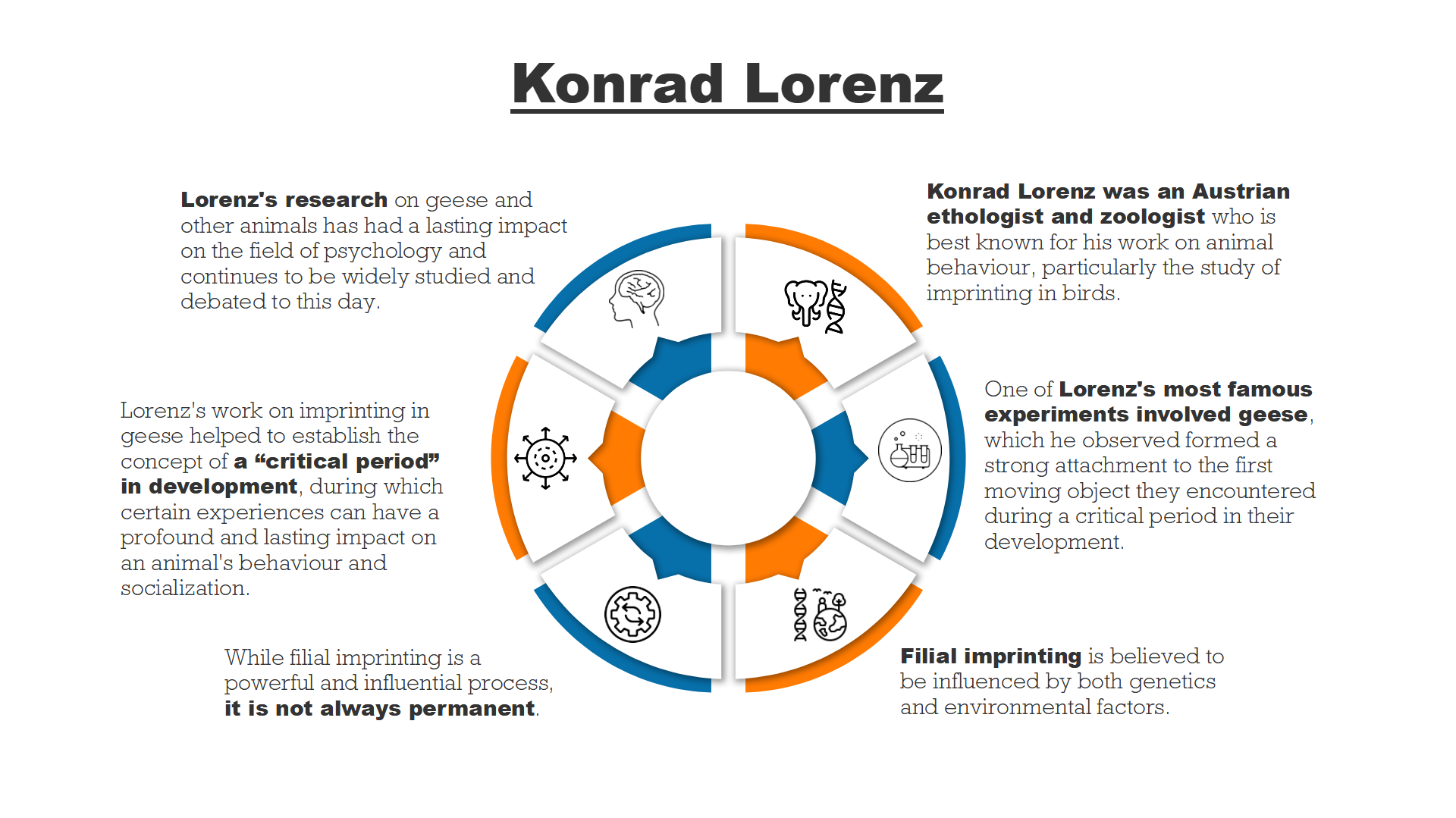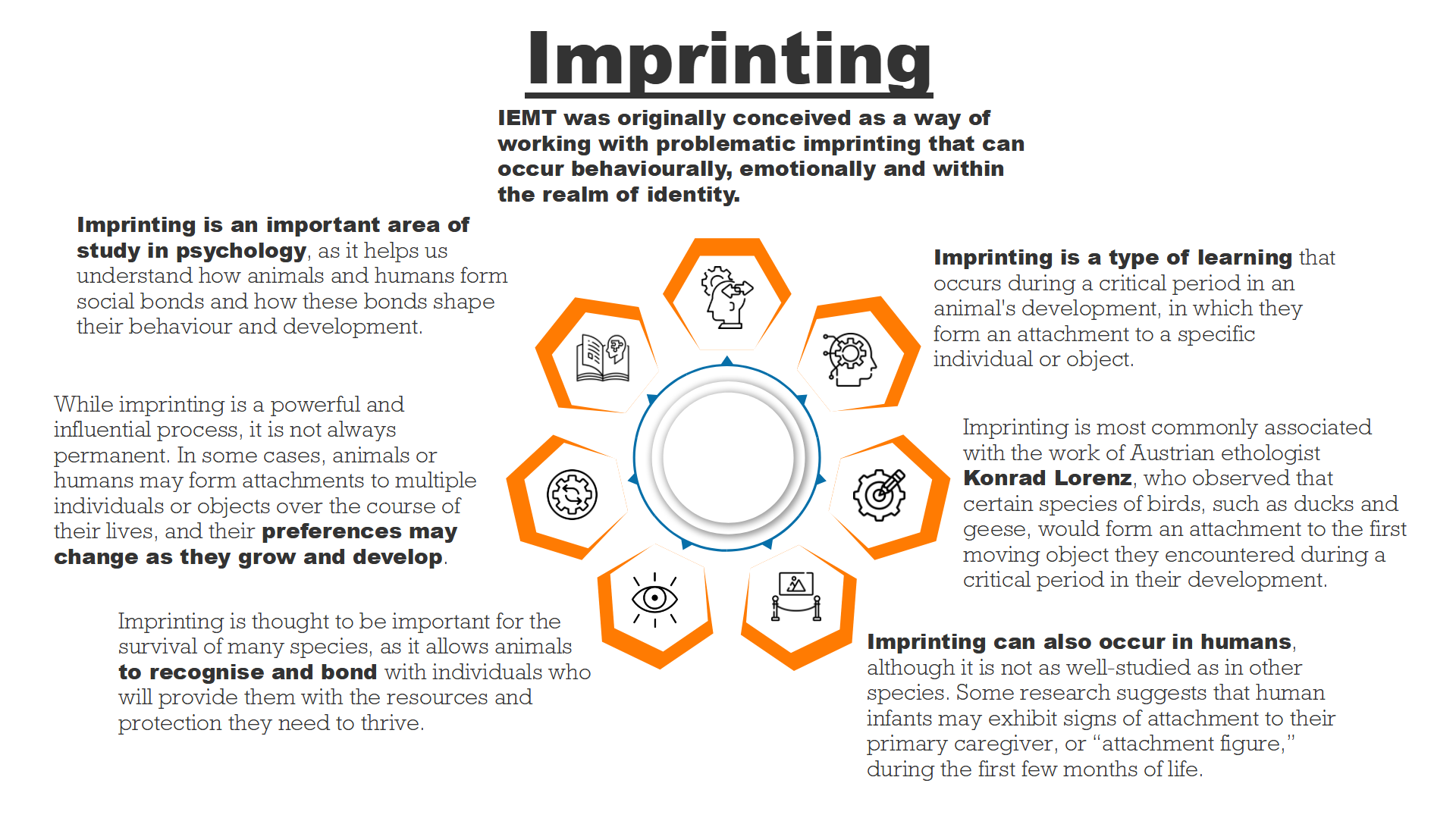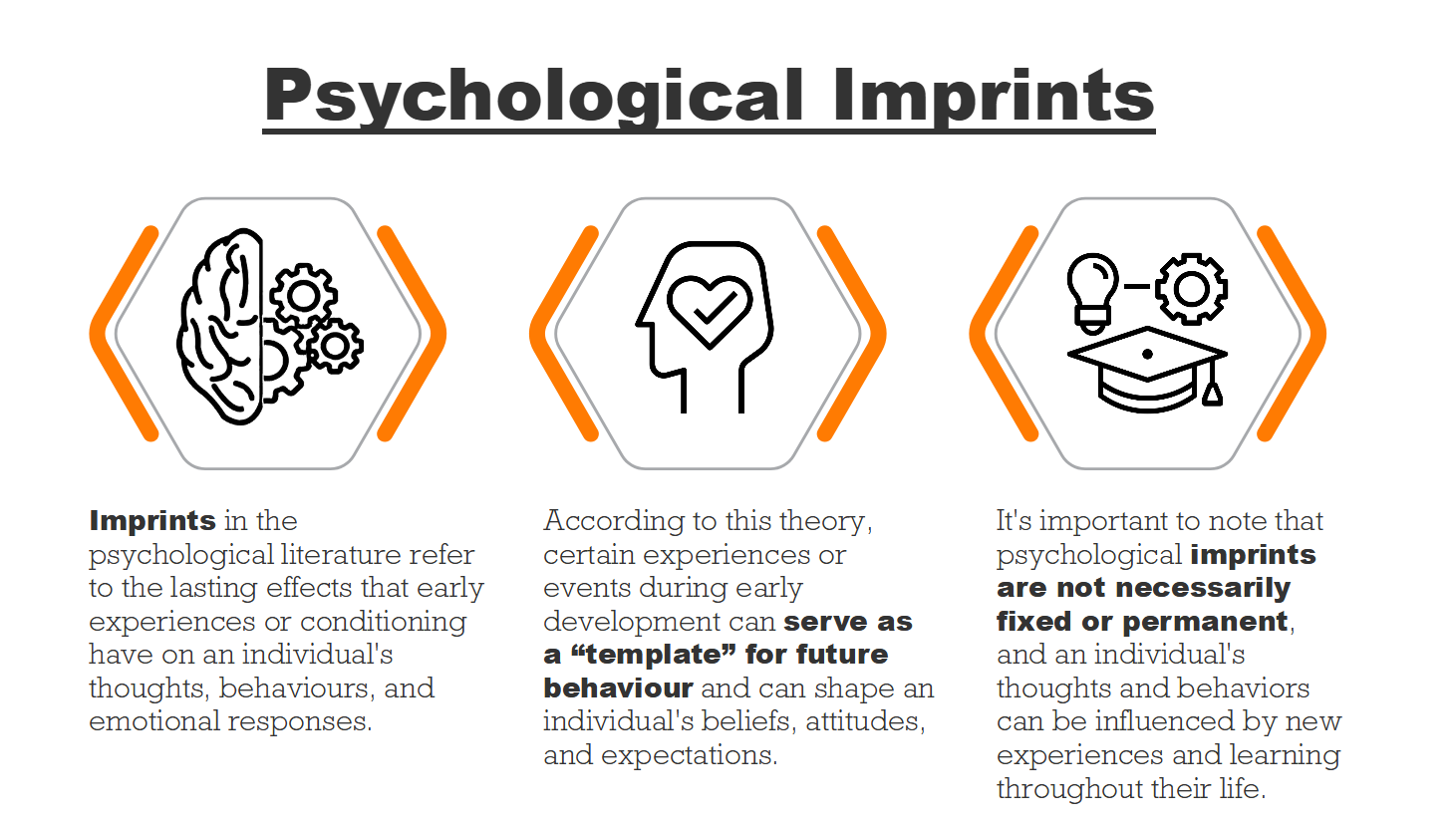Imprinting
IEMT was originally conceived as a way of working with problematic imprinting that can occur behaviourally, emotionally and within the realm of identity.
In Integral Eye Movement Therapy (IEMT), “imprinting” refers to the process by which emotional responses and identity states are shaped by past experiences. Imprinting captures how a person learns to feel certain emotions based on significant events or repeated experiences. These emotional imprints become embedded in their emotional responses, influencing how they react to similar situations in the future.
Imprinting can also occur at a deeper, identity level, where aspects of a person's sense of self are shaped by their experiences. IEMT addresses both emotional imprints and identity-level imprints, helping individuals understand the origins of their emotional and behavioral patterns and enabling them to change these responses to lead a more balanced and healthy life.
Imprinting1) is a type of learning that occurs during a critical period in an animal's development, in which they form an attachment to a specific individual or object. This process is thought to be influenced by both genetics and environmental factors, and it plays a key role in the socialization and survival of many species.
Imprinting is most commonly associated with the work of Austrian ethologist Konrad Lorenz, who observed that certain species of birds, such as ducks and geese, would form an attachment to the first moving object they encountered during a critical period in their development. This attachment, known as filial imprinting2) , would then serve as a model for the bird's future social and sexual behaviour.
Imprinting can also occur in humans, although it is not as well-studied as in other species. Some research suggests that human infants may exhibit signs of attachment to their primary caregiver, or “attachment figure,” during the first few months of life. This attachment serves as the foundation for the child's future social and emotional development.
Imprinting is thought to be important for the survival of many species, as it allows animals to recognize and bond with individuals who will provide them with the resources and protection they need to thrive. In humans, attachment to a caregiver can also provide a sense of security and support, which can help individuals cope with stress and adversity throughout their lives.
While imprinting is a powerful and influential process, it is not always permanent. In some cases, animals or humans may form attachments to multiple individuals or objects over the course of their lives, and their preferences may change as they grow and develop.
Imprinting is an important area of study in psychology, as it helps us understand how animals and humans form social bonds and how these bonds shape their behaviour and development. By gaining a better understanding of this process, we can work to create supportive environments that promote healthy social and emotional development in all individuals.
Psychological Imprints
Imprints in the psychological literature refer to the lasting effects that early experiences or conditioning have on an individual's thoughts, behaviors, and emotional responses. The concept of psychological imprints is closely related to the psychological theory of learning and development known as “imprinting,” which suggests that certain experiences or events during a critical period of development can have a lasting influence on an individual's behavior and worldview.
According to this theory, certain experiences or events during early development can serve as a “template” for future behavior and can shape an individual's beliefs, attitudes, and expectations. For example, an individual who grows up in a household with a lot of conflict may develop a psychological imprint that causes them to view the world as a place where conflict is normal and to be expected, and they may have difficulty forming close relationships or experiencing positive emotions.
It's important to note that psychological imprints are not necessarily fixed or permanent, and an individual's thoughts and behaviors can be influenced by new experiences and learning throughout their life. It can be challenging to change the effects of early imprinting, and it may require significant effort and support to overcome.
Konrad Lorenz
Konrad Lorenz3) was an Austrian ethologist and zoologist who is best known for his work on animal behaviour, particularly the study of imprinting in birds. Lorenz's observations and theories had a significant influence on the field of psychology, and he was awarded the Nobel Prize in Physiology or Medicine in 1973 for his contributions to the understanding of animal behaviour.
 One of Lorenz's most famous experiments involved geese, which he observed formed a strong attachment to the first moving object they encountered during a critical period in their development. This attachment, known as filial imprinting, would then serve as a model for the bird's future social and sexual behaviour.
One of Lorenz's most famous experiments involved geese, which he observed formed a strong attachment to the first moving object they encountered during a critical period in their development. This attachment, known as filial imprinting, would then serve as a model for the bird's future social and sexual behaviour.
Filial imprinting is believed to be influenced by both genetics and environmental factors. Some research suggests that certain genes may make an animal more or less susceptible to imprinting, while other studies have found that the timing and quality of an animal's early experiences can also play a role in the development of an attachment.
While filial imprinting is a powerful and influential process, it is not always permanent. In some cases, animals may form attachments to multiple individuals or objects over the course of their lives, and their preferences may change as they grow and develop.
Lorenz's work on imprinting in geese helped to establish the concept of a “critical period” in development, during which certain experiences can have a profound and lasting impact on an animal's behaviour and socialization. It also contributed to our understanding of how genetics and environmental factors interact to shape an individual's development and behaviour.
Lorenz's research on geese and other animals has had a lasting impact on the field of psychology and continues to be widely studied and debated to this day.

